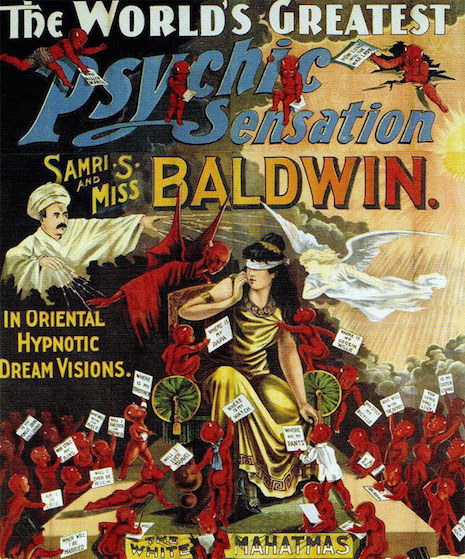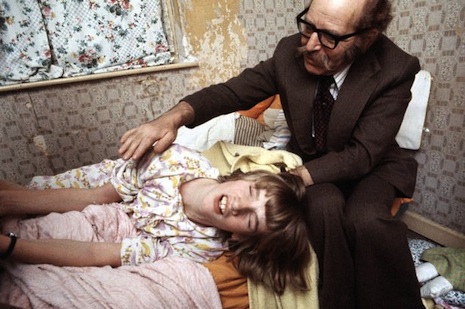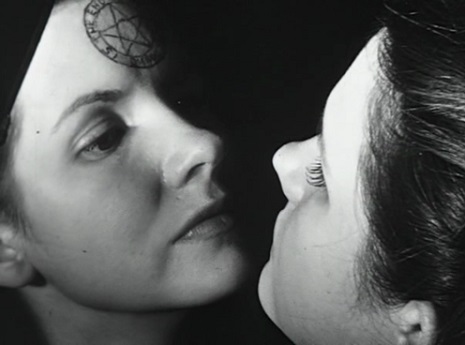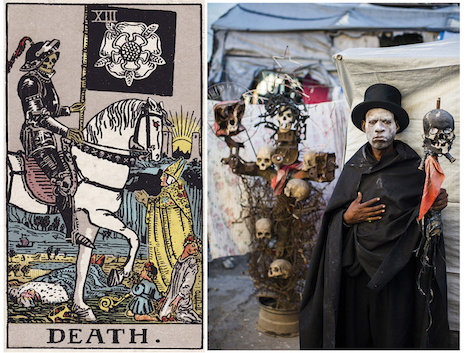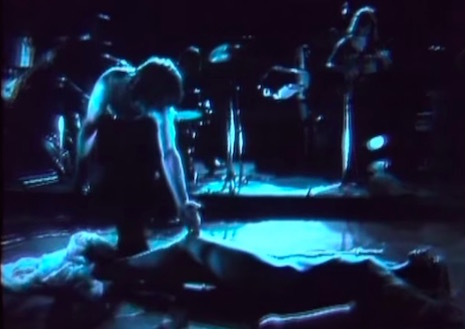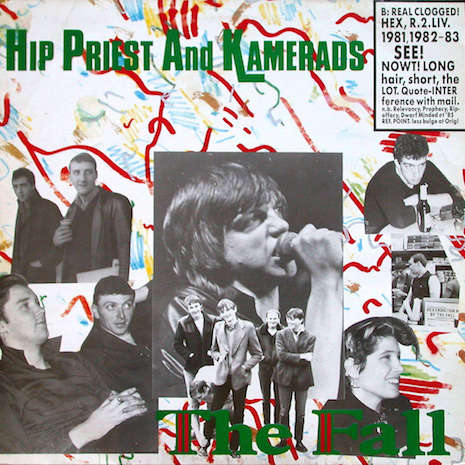
The other day I was in the Rock Hall’s Library and Archives at the Tommy LiPuma Center for Creative Arts on Cuyahoga Community College’s Metropolitan Campus in Cleveland, Ohio, and I came across a book I’d been hunting for a while, that being a volume on lead singer of the Fall, Renegade: The Lives and Tales of Mark E. Smith, which turns out to be an odd little tome, a kind of catch-all of writings by Smith himself. It was this last point I only understood when I held the book in my hand; I had thought it was a reported book but in fact it’s all written by Mark E. Smith.
One of the chapters has the remarkable title of “The Fool, The Magician, The High Priestess, The Empress, The Emperor, The Hierophant, The Lovers, The Chariot, Strength, The Hermit, The Wheel of Fortune, Justice, The Hanged Man, Death, Temperance, The Devil, The Tower, The Star, The Moon, The Sun, Judgement, The World and Eric the Ferret.” The title kind of gives away the fact that it’s about tarot, which it turns out Mark E. Smith has more than the usual interest in.
Here are a couple of key passages. I have to say I only half-believe Smith on this stuff—it’s a little hard to picture sports cars turning up at his flat all the time for readings—the whole thing is a fascinating brew of ego, half-baked erudition, superstition, and self-serving logic, a scammer’s mindset if you will:
I used to do tarot readings as well. I went through a phase of reading books on the occult. I was fascinated by it. I still believe that things leave vibrations. America, for instance; I’ve visited all these old Civil War sites and the atmosphere is incredible. You can almost reach out and feel it.
.…After a bit, when the drugs prevailed, it got ridiculous. I got more interested in the Philip K. Dick Time Out of Joint angle—the way certain pieces of writing have a power all to themselves, almost as if they can prophesize things. But I still did the readings. Kay had a lot of hippy mates, housewives with a bit of money, really, who were always seeking out people to read for them. And I had a natural talent for it. I’ve always been able to read people. My mam’s a bit like that. I never used to charge a lot, but now you can earn a fortune. When I was really skint in 2000, I thought to myself, I should be doing that again. You can earn £40 an hour.
When people did a tarot with me they’d walk away wth their life changed. But you can’t fuck around with those things too much. You’re dealing with a force. When it goes wrong you’re not being a vessel.
-snip-
I did the readings for a year or two. But people started coming back too much. I had to tell them to stop. You get to the point where people can’t function without it—once a week turns into twice a week. They were driving up in their sports cars outside the flat, asking if they should go with this nice man they’d just met. A lot of fellas used to take advantage of that. Telling them they need more tarot—and that the tarot says you need sex with me.
One of the rules of the tarot is that you shouldn’t really take a lot of money for it, like psychics. It’s not good. So I’d take presents, a nice leather jacket. You’d go round to dope dealers and they’d give you two ounces of dope per reading.
Can you imagine visiting, say, Antietam National Battlefield in Maryland and running into Mark E. Smith?
Most interesting, perhaps, is that as recently as 2000, after like 20 studio albums on his resume, Smith was “skint” enough to consider taking the practice up again.






